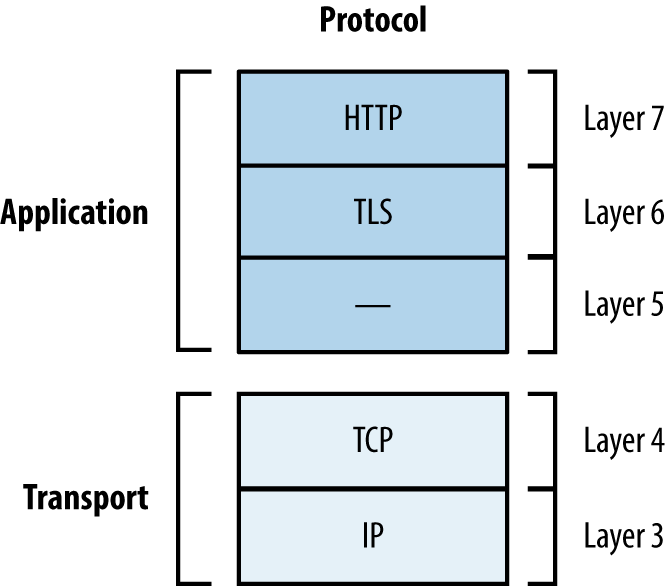Chapter 11. Assessing TLS Services
This chapter describes the steps you should undertake to identify weaknesses in TLS services. Before we get to that, I would like to take a moment to discuss how TLS came to be, and why this book avoids mentioning SSL for the most part.
Netscape Navigator dominated the browser market in the 1990s with around 70 percent market share. Between 1994 and 1996, Netscape Communications developed its own transport encryption mechanism known as Secure Sockets Layer (SSL). Due to its market dominance, SSL was widely adopted. The Internet Engineering Task Force (IETF) formed a committee to turn the Netscape SSL 3.0 protocol into a standard—the official name being Transport Layer Security (TLS), as ratified by RFC 2246 in 1999.
Entire books are dedicated to the topic. An excellent reference that provides additional layers of detail around TLS and its features is Ivan Ristić’s Bulletproof SSL and TLS (Feisty Duck, 2014).1
Figure 11-1 shows TLS running at OSI Layer 6, providing transport security to the application protocol above (HTTP, in this case). This chapter describes the mechanics of TLS version 1.2,2 along with assessment tactics that should be adopted for TLS and legacy SSL endpoints. SSL 3.0 is particularly flawed and support is being rapidly phased-out online.

Figure 11-1. TLS belongs to Layer 6
Note
TLS relies on TCP as the underlying transport ...
Get Network Security Assessment, 3rd Edition now with the O’Reilly learning platform.
O’Reilly members experience books, live events, courses curated by job role, and more from O’Reilly and nearly 200 top publishers.

